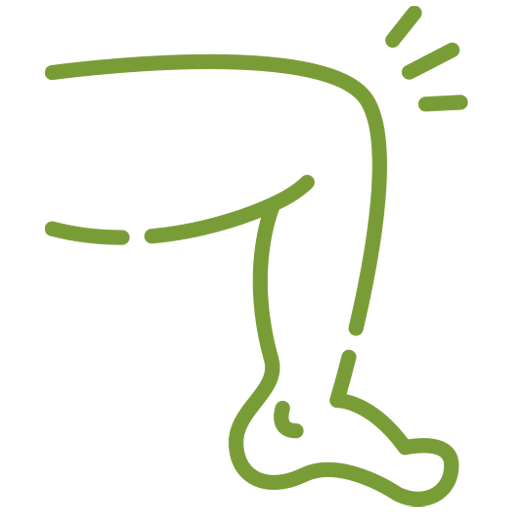A condition affecting the exterior of the knee. Improper form when running long distances can cause the fibrous tissues in your knee to grind abrasively against the thighbone over time.
Knees
The human knee is one of the most vital structures for mobility and shock absorption. Made up of multiple muscle groups, three essential bones, and protective cartilage, the knee is designed to properly bend in support of lifting, walking, running, and other key movements.
Within the knee (below the patella, or kneecap) resides the anterior cruciate ligament (ACL) and the posterior cruciate ligament (PCL), which connect the femur and the tibia. These are protected by cartilage structures such as the articular cartilage and the meniscus. On the outside of the knee are the lateral collateral ligament (LCL) and the medial collateral ligament (MCL).
Due to the complexity of this joint, if a problem occurs with even one of these ligaments, bones, or pieces of cartilage, pain might present as an unwelcome symptom.
Common Symptoms of Knee Discomfort
There are a few typical ways that patients tend to describe their knee pain. These include:
- A feeling of weakness whenever pressure is applied to the knee.
- A sharp, shooting sensation either behind the knee or in the kneecap.
- Dull chronic aching.
- Swelling and stiffness in the joint.
- A sensation of the joint or a ligament popping.
- An inability to extend the affected leg fully (whether due to tightness or pain).
Causes of Knee Afflictions
Here are several of the many conditions that can cause knee pain or mobility issues.
Carrying excess weight can also cause pain in your knees. Obesity can accelerate the onset of conditions like arthritis or chondromalacia.
Describes the unnatural wearing down of hyaline cartilage within the knee joint. This condition can be managed with medicine, changes to activity routines, and various therapies.
Often caused by acute trauma or injury to the knee. The kneecap becoming shifted from its normal position is what happens during a dislocation.
Occurs when the tendon that connects the kneecap to the tibia becomes irritated or damaged.
Explosive or unnatural movements can cause injury to occur. Affecting the ACL, MCL, PCL, or LCL, tears of these ligaments are more commonly seen in athletes. These injuries often require surgical repair for a 100% recovery.
Can happen as a result of gradual joint erosion over time. With aging, symptoms of arthritis may become more pronounced.
Occurs when the meniscus cartilage below the kneecap becomes disrupted. Intense physical activity can cause this, and in order for a proper heal to take place, medical assistance is generally required.












